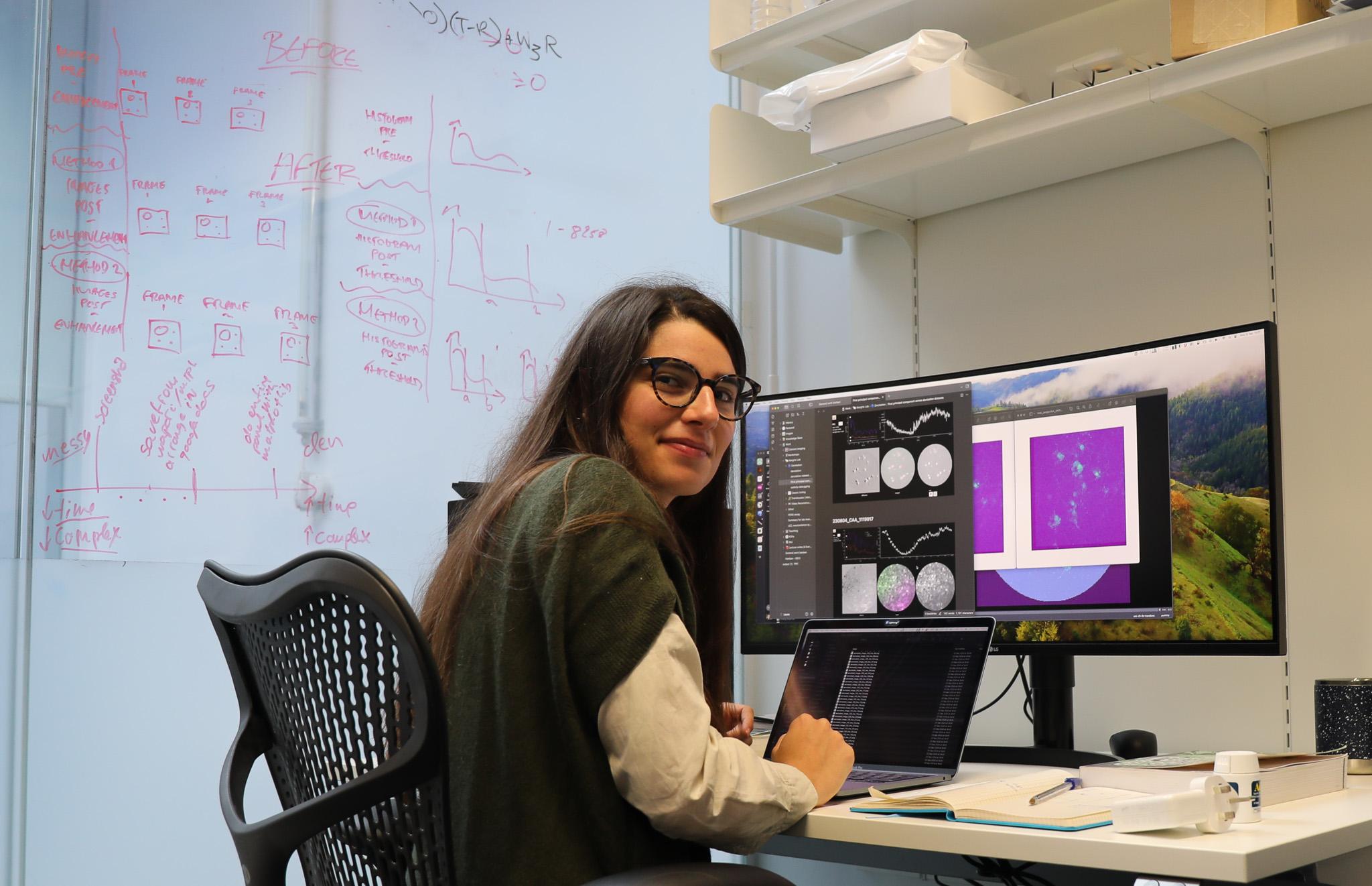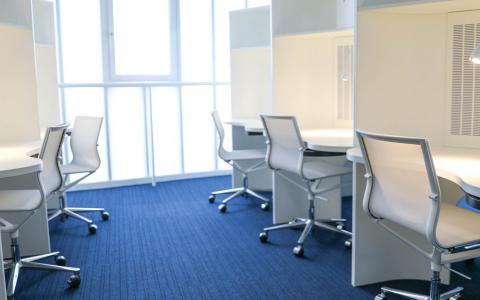
A day in the life of a Research Software Engineer
Laura Porta is a Senior Research Software Engineer (RSE) at the Sainsbury Wellcome Centre. She is passionate about making software tools that can benefit the whole neuroscience community. We spoke to her about her role and career and heard her advice for anyone considering working in neuroscience.
What do you think is important to know about working in science?
Science isn’t reserved for a select few—it's a field open to anyone with curiosity and dedication. Scientists are human, just like everyone else. We make mistakes, face insecurities, and are driven by practical concerns like maintaining a job and being valued. Success is never guaranteed, and that’s not what matters most. What’s important is following your intellectual curiosity and staying engaged with the process. No one has all the answers, and it’s okay not to.
Could you describe a typical working day?
My work revolves around my laptop, but it’s not just about writing code. Some days, I’m deeply engaged in problem-solving—working on new algorithms or refining existing ones, which is one of the parts I enjoy most. It’s a creative craft. But a large part of my day also involves translating that work into something others can understand. For example, I might be documenting why I made certain decisions in my code or explaining the relevant experimental context. Other times, I focus on improving the overall design (refactoring) to make the software easier for others to reuse and expand. This is not just for my own benefit, but for scientists and developers who might want to understand or contribute to my work.
Most of the projects I’ve worked on so far have been collaborations with experimentalists. With them, I focus on practical solutions to specific technical challenges or, more broadly, data exploration and analysis. Discussions are crucial to ensure I understand the nuances of their data, and that they’re aware of the caveats of the computational methodologies we choose.
The better we understand each other, the smoother the collaboration, and ultimately, the better the science.
Software tools and data analysis pipelines can be specifically tailored to answer a given scientific question, or they can be generalized and made available to a larger community. As I move forward, I aim to spend more time working with fellow RSEs to develop solutions that can be embraced by the wider neuroscience community.

What is the best part of your job?
The best part of my job is the combination of creativity and problem-solving. It’s exciting to explore the unknown, to challenge myself into finding new ways to approach a problem, and see it come to life in a final product.
I also enjoy the part of the job that feels more like being a traditional scientist: analysing data, putting it into context, and drawing meaningful conclusions. It's a deeply satisfying process because it connects the technical side of my work with the real-world questions we’re trying to answer in neuroscience.
Another favourite part is the ideation phase—those moments of creativity before the actual building begins. You can imagine what a tool could look like, how it could solve a problem, and then you start designing. How is the architecture going to look like? What are the best data structures to ensure efficiency? How else have people approached similar problems in the field? That initial spark of creativity is incredibly energizing, even though it can quickly consume you! But that's the nature of any meaningful project—it grabs you and pulls you in.
Tell us about your career
My career began with an undergraduate degree in biotechnology, followed by a master’s in neuroscience. During my thesis, I worked on Drosophila behaviour and appetitive conditioning, but I quickly realized that hands-on experiments weren’t my cup of tea. That experience forced me to reflect deeply on what I enjoyed most, and I found myself drawn to data analysis and software engineering.
However, I knew I lacked the technical foundation I needed, so I dedicated half a year to learning programming. That opened new possibilities for me. I started with a position at a company where I learned the fundamentals of software engineering. Soon after, I landed an internship and then a developer job, but I quickly realized that pure software development wasn’t fulfilling—I missed the intellectual independence and pursuits of science.
I transitioned back into the scientific world, taking a research assistant position in a lab where I balanced both computational and wet lab work. Eventually, I moved fully into an RSE role at the SWC, which allowed me to focus on the kind of problem-solving and algorithm development that I love most. This shift has helped me carve out a path where I can combine my passion for neuroscience research and tool development.
My career hasn’t fully followed the traditional path, which often includes a PhD. Instead, I found my way into science through software engineering and research support roles. In hindsight, it might seem like I deliberately chose an alternative route, but in reality, it was a lot of trial and error. I didn’t always know where I was headed, but each step brought me closer to combining my passions for tool development and science.
What advice would you give to people thinking about software development or neuroscience?
If you're thinking about software development, studying computer science is a solid choice. It gives you a well-rounded foundation—everything from algorithms to data structures—that opens doors to a variety of career paths, including opportunities in industry that can be financially rewarding. Having options is a great advantage in itself. Neuroscience, on the other hand, tends to lean more toward academia, and it can be a riskier path in terms of financial stability.
If you're planning to go into neuroscience, it's important to think about where you study. In places like the UK, there are specialized programs that prepare you well for the field, but not all programs offer the same balance of skills. My background in biotechnology didn’t give me as much of a foundation in mathematics or computational methods as I would have liked, and I had to catch up later. So, it’s worth considering how well your program prepares you, especially in areas like data analysis.
Also, don’t underestimate the importance of the people around you. Who you have conversations with, the professionals you connect with, and the mentors you seek out can make a big difference. Some people may have natural advantages, like family ties in academia, but you can build your own network and seek out the guidance you need. Choosing the right mentors is key—a supportive, present mentor can teach you more than someone famous but inaccessible.
What are the challenges in your work?
Two main challenges come up for me regularly. The first is the temptation to take shortcuts. When a problem needs solving, it can be easy to throw together a quick fix or rely on someone else’s explanation without fully understanding it. But I’ve learned the value of taking the time to really understand the problem, even if it’s just an extra half hour. That effort ensures the solution is solid and reliable.
The second challenge is dealing with the fear of failure. It’s easy to get caught up in thinking that my work reflects on me personally, but I try to remind myself that it’s not about that. The work I do matters because it impacts others—it helps people, and they rely on what I build. So, I focus on doing the best I can, knowing that’s enough. At the end of the day, the value of my work is in its usefulness, not in how it defines me.
About Laura
Laura studied Biotechnology for her Bachelor’s at the University of Sassari (Italy) and Neuroscience for her Master’s at the University of Pisa (Italy). At that time, she studied single flies behaviour at the Janelia Research Campus (USA). Then, she became more interested in software development and deepened her skills in computer science by working in Avanade Italy. Later, she joined the research centre SISSA (Italy) and worked on rat vision and convolutional neural networks. Now, Laura is interested in the development of good software tools for neuroscientists that could benefit the community as a whole.


